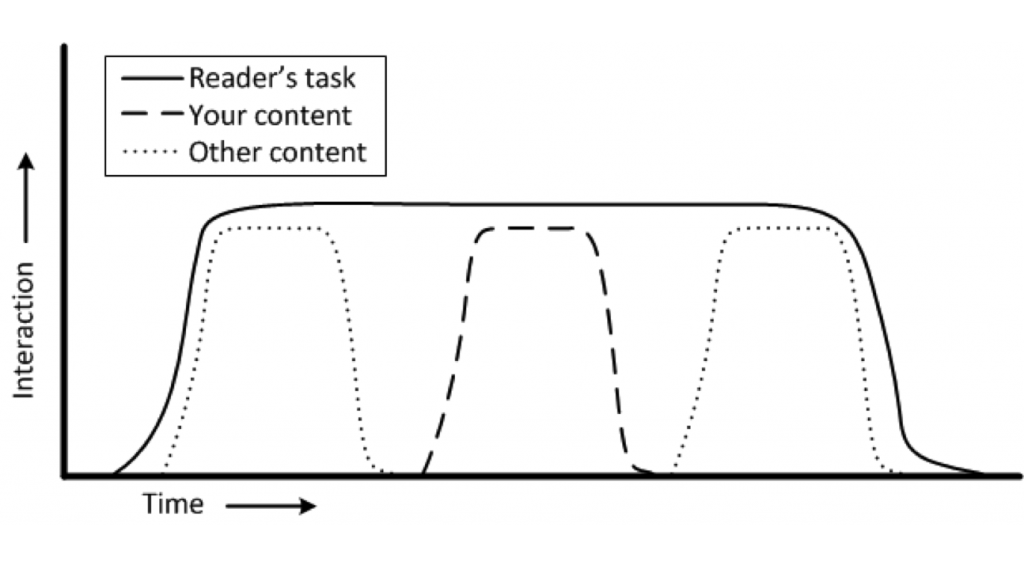This series looks at the different site interactions that readers have with informational sites and is adapted from the full paper on the topic that I wrote with Jan Spyridakis and presented at HCII 2015: Using Readers’ and Organizations’ Goals to Guide Assessment of Success in Information Websites. See the entire series
Reading to Learn (to use Later or to Apply with Other Information)
Reading to Learn to Use Later, without a particular or immediate task in mind, is similar to what Sticht described as Reading to Learn [1]. The critical distinctions between this and Reading to learn to do now and Reading to learn to do a task later are:
- The reading task in your content is a subtask of the reader’s ultimate goal of learning a new concept or skill.
- The reader does not have a specific goal beyond an increase in knowledge.
An example of reading that facilitates this type of reader goal, where the goals are accomplished after using the website or in conjunction with using other information, would be websites and books about design principles so as to use the information later when designing a website. The connection between the reading and the ultimate application of the knowledge is too distant to have a meaningful and identifiable cause-effect relationship.
In a Reading to Learn to Use Later goal, as shown in the figure, the reader reads information from many different locations, of which your content might be only one information source. While similar to the Reading to Be Reminded interaction type, in this interaction type, the reader is seeking more information from the content. In this interaction, the content is new and the reader might consult multiple sources to accumulate the information required to reach the learning goal.

It is difficult to measure how well readers are accomplishing their ultimate learning goal when their interaction with the website may be one step of many and they might not use the information until much later. However, it is reasonable to collect information about the immediate experience. For example, the content could encourage readers to interact with the page as a way to provide feedback to the reader and to collect information about the readers’ experience. The content could also include quizzes, and links or affordances such as prompts to share the content with a social network.
[1] Sticht, T.G., Fox, L.C., Hauke, R.N., Zapf, D.W.: The Role of Reading in the Navy. DTIC Document (1977)
